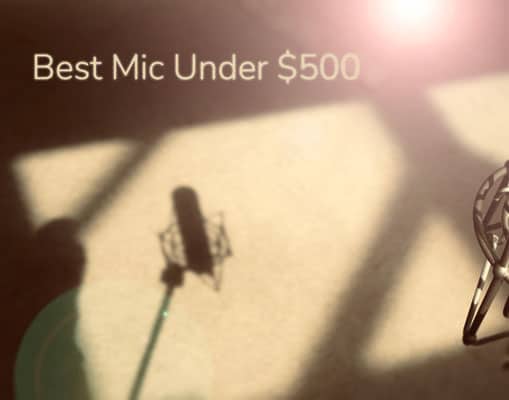Summary and Rating: Shure MV7 vs SM7B
Shure MV7
Shure SM7B
Our Overall Rating
4.7 (out of 5)
4.9 (out of 5)
Pros
pros MV7
- price
- excellent detail for a spoken word dynamic mic (XLR)
- good for recording in untreated environments
pros SM7B
- iconic sound
- versatile
- no need for shock mount or pop filter
- good for recording in untreated environments
Cons
cons MV7
- Sound with the USB connection is not so great
cons SM7B
- heavy
MV7
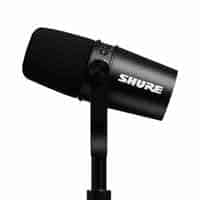
Check Price:
SM7B
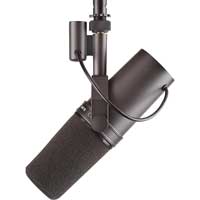
Check Price:
Bottom Line
With the SM7B you’re getting an industry-standard icon, great for spoken word and a variety of musical applications. With the MV7, you’re getting a great value mic with excellent sound on spoken word applications.
Rivals of the SM7B
The Shure SM7B is the flagship mic of the Shure line, responsible for a large proportion of spoken professional broadcast recordings, and a go-to for vocals in the studio. (Michael Jackson’s Thriller, a famous example)
We’ve been getting a lot of questions lately about how competitors of this mic fare in a head-to-head battle. In particular, readers want to know what the classic sound of the Shure SM7B is like in direct comparison to the Shure MV7 and the Electrovoice RE20.
In this post, we focus on the MV7 vs SM7B battle. See our post RE20 vs SM7B, for the EV RE20 comparison.
For all of our reviews of audio gear, see our gear category page.
Alternatives to these Microphones
Electrovoice RE20
An Iconic broadcast microphone with minimal proximity effect. Used in the studio for everything.
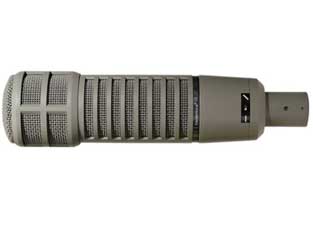
Check Price:
Shure SM7dB
Same mic as the SM7B with an onboard preamp giving you up to +28dB of clean gain.
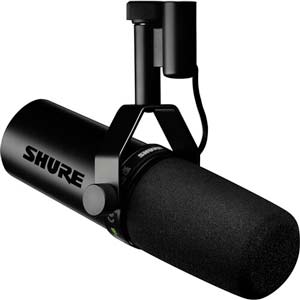
Check Price:
Rode PodMic
A solid, cheaper mic for the spoken word.
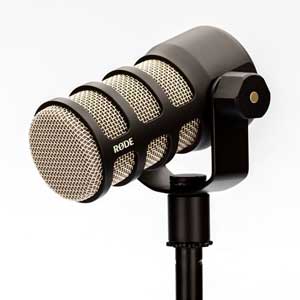
Check Price:
Neumann TLM 102
A great choice if you need the detail that only a fine condenser mic can offer.
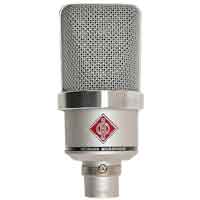
Check Price:
Who are these mics for?
MV7
The MV7 is a mic aimed at podcasters and spoken word recordists who want a cheaper SM7B. The mic provides excellent sound quality with connectivity versatility. This mic can be connected to a computer with either an XLR through an interface or directly via USB.
Like the SM7B, the MV7 has excellent noise rejection making it well-suited for working in untreated spaces or noisy environments.
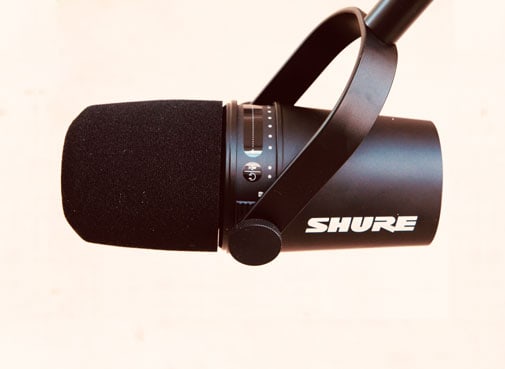
SM7B
The SM7B is for professional recordists of all types. Its iconic sound can be used for a wide variety of studio applications and is especially great for spoken word or sung vocals.
Because the SM7B is a dynamic mic, it has excellent unwanted noise rejection. For this reason, the mic is also great for recording in untreated spaces.
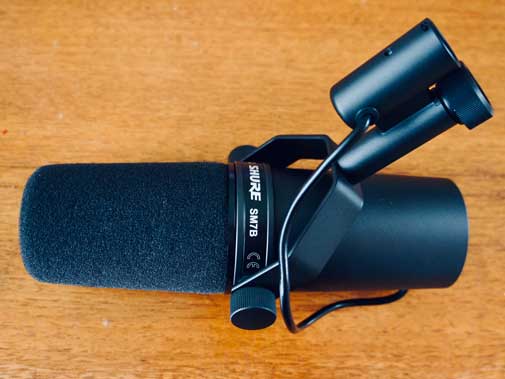
Who are these mics NOT for?
The Shure MV7 is not recommended for the following applications:
- Recording instruments, sung vocals, or other musical applications
- applications that require polar patterns other than cardioid: for example, figure-8 or omnidirectional.
The Shure SM7B is not recommended for the following applications:
- recording ensembles, or the ambient sound of a room.
- applications that require the lush detail and high sensitivity of a condenser mic
- applications that require polar patterns other than cardioid
- Field recording. For field recording, we would recommend the Shure MV88
What’s in the box?
MV7
- The Mic
- USB-C cable and a standard USB cable
- Shure Plus Motive software – for digital adjustments to the frequency response including EQ, compression, and other effects.
SM7B
- The Mic (With built-in shockmount system and pop filter)
- Detachable Windscreen
Build / Design : Shure MV7 Vs SM7B
Shure MV7
The design of the Shure MV7 is essentially a smaller, lighter Shure SM7B. The weight (548 grams) and size mean the mic can be easily mounted with a desktop stand or boom mount. It comes in black or silver.
The MV7 has a headphone jack output on the bottom of the mic for monitoring. USB and XLR outputs are equipped at the rear of the mic.
The mic also has some onboard controls for gain and monitor volume. These controls are located on the touch strip with LED metering lights for levels.
In our tests, the touch strip controls worked as they should. On a personal note, I didn’t like the touch strip. It looks like something that’s not built to last. But to be fair, everything worked just fine.
Both the MV7 and SM7B are dynamic microphones. Dynamic mics have very little self-noise, reject unwanted background noise, and do not require phantom power to operate.
SM7B
The SM7B is a good-sized mic. With its built-in air-suspension shock and vibration isolator, she weighs in at 784 grams. The mic has a low impedance of 150 Ohms.
The benefit of the design is that you will not need a shockmount or pop filter. It also has a humbucking coil to shield the mic from electromagnetic interference. The mic, however, definitely requires a strong mic stand.
The mic has backplate switches for bass roll-off, and presence boost (upper mids boost of about +3dB).
It is important to note that the SM7B requires more gain (about 60dB) from your preamp than most condenser mics. We recommend using a Cloudlifter if your interface or preamp doesn’t have enough juice. This is a fail-safe way to provide an extra 20-25 dB of clean gain.
Shure MV7 vs SM7B Frequency Response Graph
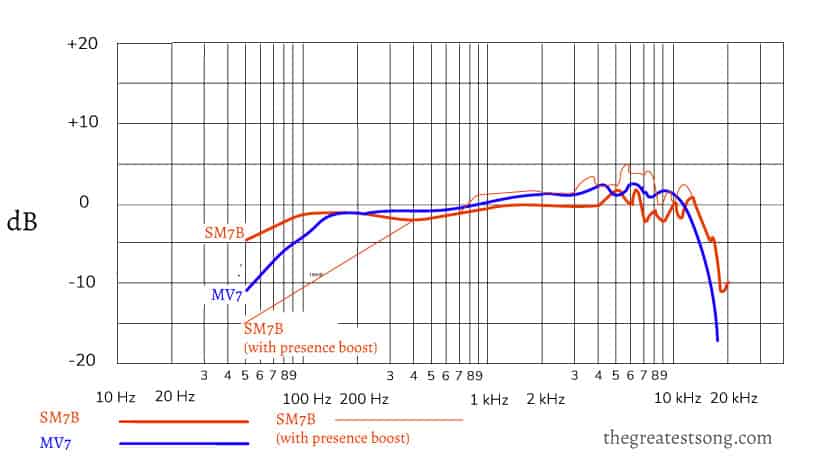
The MV7 is a bit less neutral than the SM7B with a fixed boost in the upper mids presence. With the onboard switches, the SM7B offers bass roll-off and presence boost options.
Shure MV7 vs SM7B Test Drive
As a reminder, we test everything on this site ourselves.
Here below you can hear our tests of the MV7 and SM7B with the spoken word. We’ve included some of our tests of the SM7B on sung vocals and acoustic guitar to give you an idea of its sound on musical applications.
We used a Universal Audio Apollo Solo Interface recorded with Logic Pro X. There is no EQ or compression applied to any of the audio clips here. We adjusted the gain from the audio interface to taste.
Full disclosure: We fully acknowledge that there is no one way to use a microphone. Mic placement, how you play or sing, not to mention EQ, compression, Impedance, and preamp settings can all have dramatic effects on the final result.
MV7 Spoken Vocals with XLR connection
MV7 Spoken Vocals with USB connection
SM7B Spoken Vocals
SM7B Sung Vocals Test
SM7B Acoustic Guitar Test
Conclusions about the Sound
Shure MV7
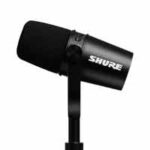
Check Price:
Using the XLR connection, the Shure MV7 surprised us in our tests with excellent detail in spoken word recordings while still displaying all the advantages of dynamic microphones: excellent noise rejection, near-zero self-noise, and no problem with loud sound sources.
The USB connection, however, is not worth using for professional applications. The sound is dull, lacks detail, and has a tendency to clip.
Overall, the MV7 lacks the fullness and warmth of the SM7B, and it won’t be much use to you in musical applications. That said, at nearly half the price, it’s an excellent value mic delivering quality spoken word recordings.
SM7B
Shure SM7B

Check Price:
The SM7B delivers an iconic, smooth performance with a wide range of applications. It is much more versatile than the MV7. In addition to its iconic spoken word performance, it works wonderfully on sung vocals, guitars, and other musical applications.
The advantage of the SM7B is its ability to emphasize sound sources in a smooth, flattering way. Its sound is not always to most accurate or realistic, but it will always sound rose-colored in an SM7B kind of way.
The sound is less detailed, which is sometimes a good thing. Its proximity effect can be used to your advantage by simply placing the mic closer to the source for the added low end.
Questions or Comments?
Follow the discussion here on Facebook.
Why You Can Trust The Greatest Song
All the audio gear in our reviews is tested with our own hands, ears, and eyes. We compare and test the gear side-by-side to keep our ears honest.
We do not accept free gear from anyone. More information here.
